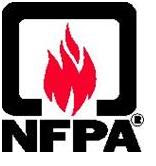
When Tweet meets Blog…or is it Blog meets Tweet? Well, I’m definitely doing both and use Twitter to enhance the TFPFP Blog with daily news items of the fire protection/prevention nature that are listed over on the right hand column of my blog here.
On my Twitter @FiremanRich timeline, I’ve been making my tweets count or at least try to, and have the tweets be ones of substance by providing links to informative online news items concerning fire safety. When I’ve done an update to the TFPFP Blog, with a new article, I also tweet about it on Twitter a few times, trying not to do any type of twitter spam. So you could say both my blog and my twitter sort of go hand and hand. From all the information I’ve been learning about blogging and twittering it all comes down to content that helps to provides useful information to those who read them. Those that do visit my blog and/or read my twitter timeline I have to say Thank-You and come back often because I plan on being here for awhile. : )
Since changing up the way I tweet this last month or so, to make my tweets count for more and provide my blog with an area of fresh daily content I begun to notice a small pattern of sorts. With the number of tweets that I make of similar concerns I realized by bringing them together a blog article can emerge. I do read the articles I tweet links to and are of interest to me because the subject matter can save a persons life and make someone more a wear of their surroundings. One of the more important items I tweet about is on smoke detectors and on Twitter you can find a lot of good information at the #smokealarm trend area about them. Over the past week there were two tweets concerning smoke detectors that really caught my eye after I made the tweets about them. One was a good tweet the other not so good.
First the sad tweet, that was about a 94-year-old woman from Longview Texas who died in a fire. The Fire Marshal of the area, Thomas Mock stated, "The sad part is, she has a security system in the house, but as far as we can tell, there was not a smoke detector inside." Alla V. McCray was found trying to reach the backdoor to escape the fire but apparently did not have enough time before being overcome by the smoke and fire.
The good tweet was from Antigo, Wisconsin, where a woman was alerted of the early stages of a deadly fire. Lt. Mark McKinney of the Antigo Fire Department stated, "The owner was alerted by smoke detectors before the fire progressed a lot." The woman gives credit of being woke up by working smoke detectors in the house that gave her enough time to egress/exit safely out of the home that was on fire.
Both these fires happen days apart of each other, to two different people and, in two different parts of the country. Both had different results, which emphasizes the great importance to check those smoke detectors on a monthly basis.
If more data is needed to show the importance of smoke detectors, we only need to look at a report that came out this month from the National Fire Protection Association (NFPA), Fire Analysis and Research Division. The report is entitled “Smoke Alarms in U.S. Home Fires ” and can be read in its entire PDF format at…
http://www.nfpa.org/assets/files/PDF/OS.SmokeAlarms.pdf
According to the National Fire Protection Association (NFPA) report released this month, 40% of all home fire deaths resulted from fires in homes with no smoke alarms.
“Smoke alarms are one of the greatest fire protection devices of our time and have significantly contributed to the decline in home fire fatalities since the late 70’s,” said James M. Shannon, president of NFPA. “But it’s not enough to randomly put up one smoke alarm and forget about it. In addition to placing smoke alarms in recommended areas, they must be kept in good working order, which includes testing them monthly, changing batteries at least once a year, and making sure that they are not disconnected.”
The NFPA offers the following smoke alarm tips:
* Choose a smoke alarm that bears the label of a recognized testing laboratory.
* Install a smoke alarm in every bedroom, outside each sleeping area, and on every level of your home, including the basement.
* Interconnect all smoke alarms throughout the home. When one sounds, they all sound.
* Replace all smoke alarms, including alarms that use 10-year batteries and hard-wired alarms, when they are 10 years old or sooner if they do not respond properly when tested.
* Consider home fire sprinklers when building a new home or doing a major renovation.
If you take the NFPA’s “Smoke Alarms in U.S. Home Fires Report” along with the tweets on Twitter you can find at the #smokealarm trend area you will see the picture that should be forming at this point in this blog entry.Hold that thought for a moment….I’ll be right back….
… I just checked my smoke detectors in my house for the month. They are all in a full working mode with good batteries. I care about my family very much and it only takes a few minutes each month to make sure my early warning smoke detectors are in working order.
Are yours?
(The usual disclaimers: I am not a journalist; This is a blog that expresses an outlook and is not conclusive in any shape or manner.)



No comments:
Post a Comment